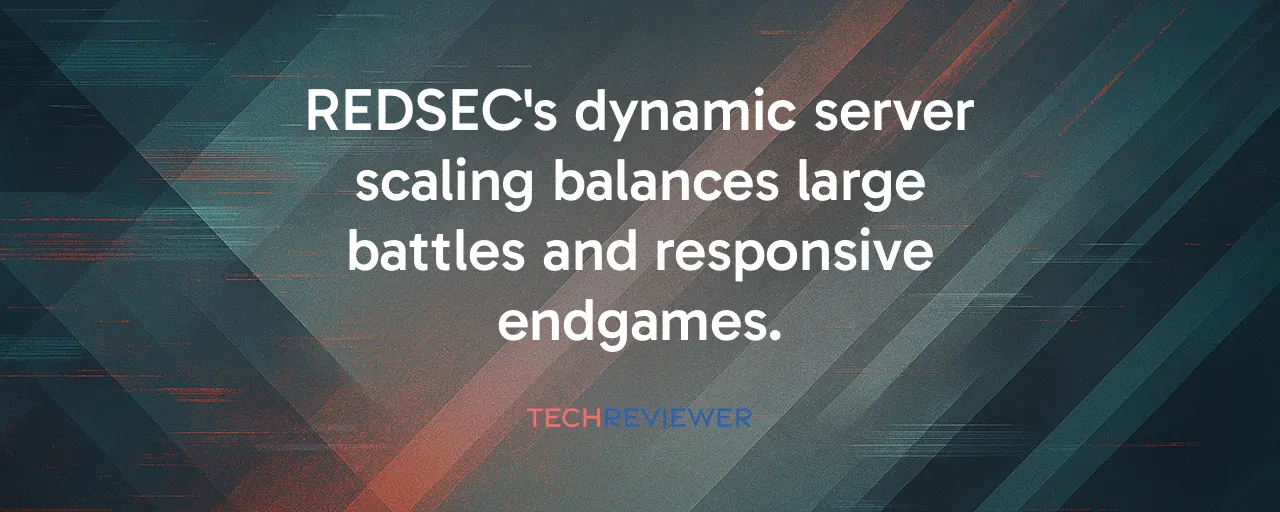Launch Draws Massive Crowds
REDSEC dropped on October 28, 2025, as part of Battlefield 6's Season 1 update. The free-to-play battle royale pulled in more than 500,000 players on Steam alone that day. This added to Battlefield 6's momentum, which had already set a record with 747,440 peak concurrent Steam players at the game's launch in early October. Players got a fresh map, new vehicles, weapons, and the standalone mode that requires no base game purchase.
This success arrives after the franchise recovered from Battlefield 2042's rough 2021 start. Four studios collaborated on Battlefield 6, with Ripple Effect handling REDSEC. The mode supports cross-play on PC, PlayStation 5, and Xbox Series X/S.
Server Rates Spark Debate
Servers in REDSEC operate at 30Hz during most matches with 100 players active. Lead producer David Sirland addressed concerns on social media after a player questioned the rate for 2025. He pointed out the system switches to 60Hz once the lobby shrinks for the final circles.
Sirland argued the 30Hz setup delivers better consistency than many rivals face at their standard rates. Older Battlefield entries like Battlefield 2042 used higher tick rates with larger player counts. Battlefield 2042 ran at 45Hz with up to 128 players, but REDSEC's 30Hz is optimized for stable 100-player matches with full destruction. Scaling to 100 demands different priorities to avoid crashes or lag spikes.
Dynamic Scaling in Action
Early rounds involve widespread action across large areas, creating heavy server loads from physics, collisions, and hit checks among all participants. At 30Hz, the server processes updates every 33 milliseconds, keeping things stable even when destruction events pile up.
As players drop out, density rises in smaller zones. The switch to 60Hz cuts update windows to 16 milliseconds, sharpening response in clutch moments. Client prediction smooths movement between ticks, while lag compensation ensures shots register based on what shooters saw.
Warzone Handles Bigger Lobbies Slower
Call of Duty Warzone currently runs with up to 150 players at 20-24Hz, with 200-player modes available only in limited-time events historically. Despite the lower rate, the game retains millions of users through frequent updates and cross-over events. Hit registration complaints surface often, yet the title leads market share.
Battlefield 6 sticks to 100 players, allowing tighter optimization. The 30Hz base exceeds Warzone's ceiling, and the endgame boost provides an edge in finals that Warzone lacks entirely.
Warzone's sustained popularity shows that technical specs alone don't dictate success, as content freshness and accessibility often outweigh raw performance for the average player.
Apex Legends Stays Low for Speed
Apex Legends caps lobbies at 60 players and runs servers at 20Hz throughout. Respawn focuses on hero abilities and fluid traversal over raw server power. Community feedback highlights occasional desync, but seasonal content keeps engagement high.
REDSEC's higher starting rate and variable scaling target larger battles with Battlefield's signature environmental destruction. The approach trades some early responsiveness for reliability across more simultaneous interactions.
REDSEC's focus on large-scale combat and environmental destruction is balanced by dynamic tick rate scaling, ensuring stability without requiring constant 60Hz operation.
Cost and Stability Drive Choices
Running 60Hz for full 100-player matches would roughly double server expenses. EA invested over $400 million in Battlefield 6, making efficiency critical for the free mode's long-term support. Cloud resources scale dynamically, but constant high rates strain budgets.
Players report solid performance overall, with launch metrics showing strong retention. Some competitive users note softer feel in peeks compared to 128Hz shooters like Valorant, which limit matches to 10 participants.
The dynamic tick rate model allows EA to balance technical ambition with operational sustainability, ensuring stable performance without unsustainable infrastructure costs.
Lessons From Varied Approaches
Warzone proves massive scale works at modest rates when polish elsewhere shines. Apex shows smaller lobbies enable other strengths despite low ticks. REDSEC's hybrid method balances size, features, and cost, offering a template for future large-scale royales.
Developers continue gathering data through Battlefield Labs. Future seasons may refine the system further, especially if player density patterns shift with new maps or modes.
The industry is moving toward adaptive systems that adjust performance based on gameplay phase, and REDSEC's design may influence how other studios approach large-scale multiplayer netcode.
